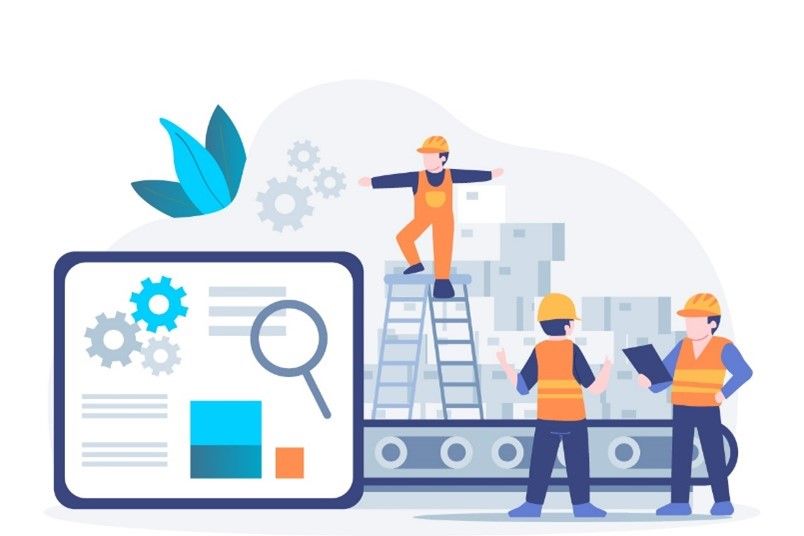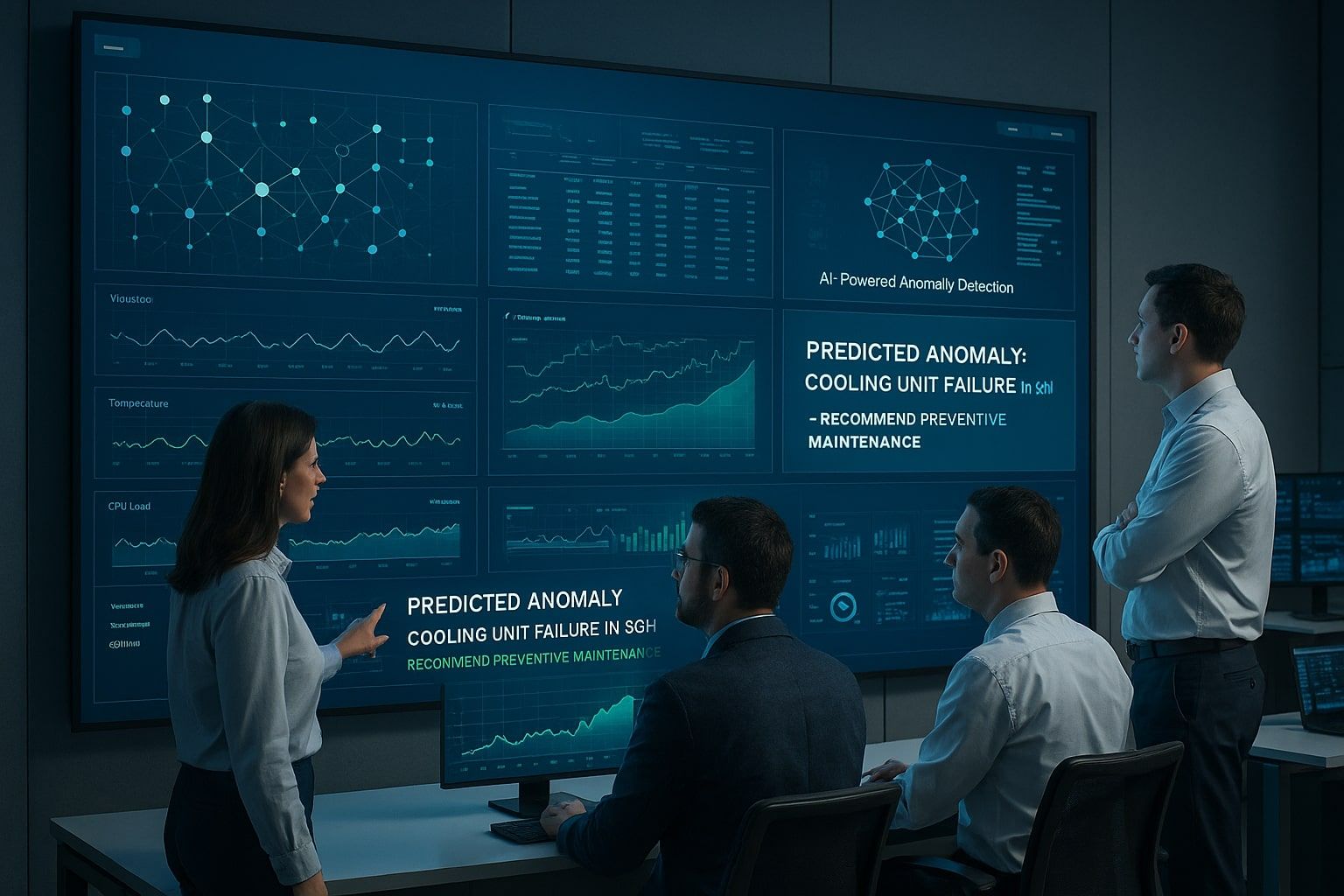Application of Computer Vision for Safety Detection in Mining Areas
Workplace safety is a top priority in the mining industry. With a harsh and dangerous environment, ensuring the safety of workers from accidents or injuries is crucial.
Workplace safety is a top priority in the mining industry. With a harsh and dangerous environment, ensuring the safety of workers from accidents or injuries is crucial. One emerging technology helping achieve this goal is Computer Vision. With the ability to detect and analyze conditions in real-time, computer vision can help ensure that safety standards in mining areas are consistently maintained.
Applications of Computer Vision for Safety Detection in Mining
In mining areas, where workers face risks such as landslides, heavy equipment accidents, or exposure to hazardous substances, this technology can play a vital role in maintaining operational safety. Here are several examples of how Computer Vision can directly improve workplace safety in mining operations:
1. Personal Protective Equipment (PPE) Detection
One of the most common uses of computer vision in workplace safety is detecting the use of Personal Protective Equipment (PPE). In many industries, including mining, wearing PPE such as helmets, protective eyewear, masks, and reflective vests is mandatory to prevent serious injuries. Using cameras and computer vision algorithms, the system can automatically detect whether workers are wearing the appropriate PPE before entering hazardous areas. If a worker is detected without the required PPE, the system can immediately send a real-time notification to the worker or supervisor. This helps prevent accidents caused by negligence in PPE usage.
Related article: PPE Detection Systems: How They Improve Safety and Save Lives
2. Monitoring Restricted Areas
In mining, there are certain areas that can only be accessed by authorized personnel, such as areas with high radiation levels or where heavy equipment operates. Computer Vision can be used to detect human and vehicle movement in these restricted areas. For example, the system can monitor if a worker unintentionally or without authorization enters a dangerous area. If detected, the system will automatically issue a warning to the worker and management to take immediate preventive action. This not only prevents accidents but also helps manage compliance with safety protocols.
3. Hazardous Behavior Detection
Some accidents in mining are caused by unsafe behavior or risky actions by workers, such as using a phone in operational areas or standing too close to heavy equipment in operation. Computer Vision can be used to detect such hazardous behaviors in real-time.
Using AI-based video analysis, the system can recognize movements or actions deemed risky, such as standing in the path of heavy machinery, smoking in prohibited areas, or working without proper equipment. With direct alerts to supervisors, corrective actions can be taken immediately to prevent accidents.
4. Heavy Equipment and Machinery Surveillance
In mining, heavy equipment such as excavators, dump trucks, and large drills are critical to daily operations. However, accidents involving heavy equipment can be extremely dangerous and fatal. Computer Vision can provide better surveillance of heavy machinery.
The system can detect potential collisions between heavy equipment and workers, other vehicles, or surrounding objects. Additionally, computer vision can monitor the condition of the machinery, such as identifying damage to certain components through visual analysis, allowing maintenance to be performed before the damage becomes severe and causes accidents.
5. Worker Health and Fatigue Monitoring
Fatigue is a major factor contributing to accidents in mining, especially when workers are faced with long hours and physically demanding conditions. Computer Vision can detect signs of fatigue in workers’ faces, such as loss of focus or drowsiness. The system can analyze facial expressions, movement patterns, and behavior to detect if a worker is showing signs of fatigue that could endanger their safety. If fatigue is detected, management can provide rest breaks or take other preventive measures immediately.
See also: AI Computer Vision: Seeing What Humans Miss
Key Benefits of Computer Vision for Mining Safety
The application of Computer Vision in mining areas offers numerous benefits for both safety and operational efficiency, including:
- Accident Prevention: Early detection of safety violations and hazardous behaviors allows accidents to be prevented before they happen.
- Real-Time Response: The ability to provide immediate alerts to workers or supervisors enables quick actions in dangerous situations.
- Automated Safety Processes: By leveraging computer vision, safety monitoring becomes more automated, reducing reliance on manual oversight prone to human error.
- Enhanced Compliance: This technology ensures adherence to safety regulations and the use of PPE in mining areas, which are often the focus of safety audits.
Challenges in Implementing Computer Vision in Mining
Despite its many benefits, implementing computer vision in mining also comes with its own challenges, such as:
- Camera Quality and Extreme Environments: Mining areas often have extreme environmental conditions, such as dust, rain, or low light, which can interfere with camera performance.
- Infrastructure Requirements: Implementing a computer vision system requires a solid technology infrastructure, including stable internet connectivity in remote mining locations.
- System Accuracy: Computer vision systems need continuous improvement to recognize all scenarios and variations that occur on-site, including overcoming detection biases.
Computer Vision is a cutting-edge technology that can help enhance workplace safety in mining areas. With its ability to detect safety violations, monitor heavy equipment, and prevent hazardous behaviors, this technology can significantly reduce the risk of accidents in the workplace. For mining companies, investing in this technology not only supports employee safety but also improves operational efficiency and ensures compliance with increasingly stringent workplace safety standards.
Related articles:
Realtime Truck Hull Number Detection Using AI-Powered OCR Technology


